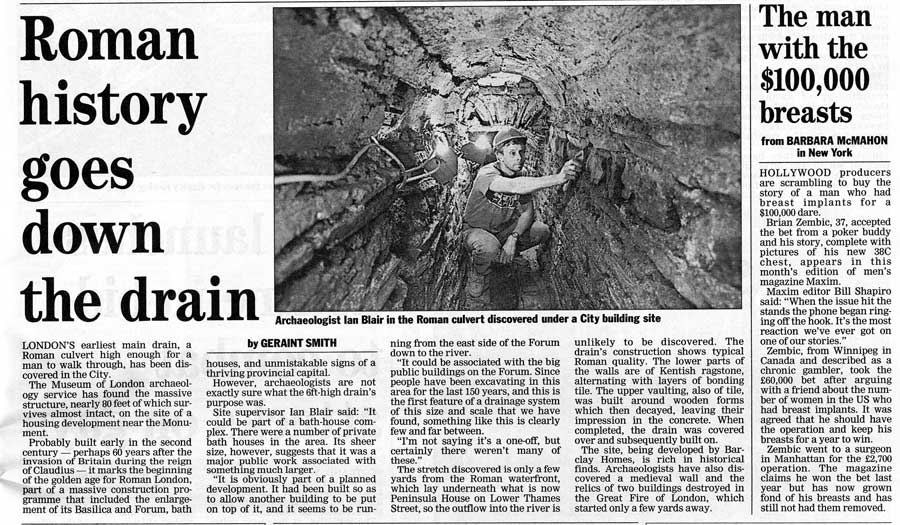Roman history goes down the drain: or the man with the $100,000 breasts
Ian Blair
Monument House (BPL95) was a small site on Botolph Lane, with the main excavation undertaken between March and July 1998.
The modest size of the site belied the quality of the archaeology it contained, as not only did it produce the well-preserved remains of buildings destroyed in the Great Fire of 1666, but also a fantastic intact Roman drainage culvert, incorporating a deep access or drop shaft at its upper end. The story of its discovery, excavation, recording, and ultimate consolidation (complete with a time capsule rapidly thrown together by the archaeologists) will be part of a more detailed post. By way of an opening, a photo of the archaeological team, and a contemporary news cutting detailing the discovery of the culvert, which was later dated by dendrochronology to the early third century, and not a hundred years earlier as had been initially theorised.
The contemporary news item: ‘Roman history goes down the drain’ was published in the Evening Standard in July 1998, but it is the juxtaposition with the adjoining story ‘The man with the $100,000 breasts’ alongside the photo of me in the culvert, that never fails to catch my eye, and make me smile. $100,000 or £60,000 was a lot of money back in 1998!

![]() The site team (from the front and left to right): Andy Daykin, Richard Turnbull, Val Griggs, Dave Mackie, John Minkin, Gerald Palmer (Blanchill attendant), Jo Wainwright, Ian Blair, Jessica Cowley, Martin 'Noddy' Bowman (Blanchill attendant), Gina Porter
The site team (from the front and left to right): Andy Daykin, Richard Turnbull, Val Griggs, Dave Mackie, John Minkin, Gerald Palmer (Blanchill attendant), Jo Wainwright, Ian Blair, Jessica Cowley, Martin 'Noddy' Bowman (Blanchill attendant), Gina Porter



Comments powered by CComment